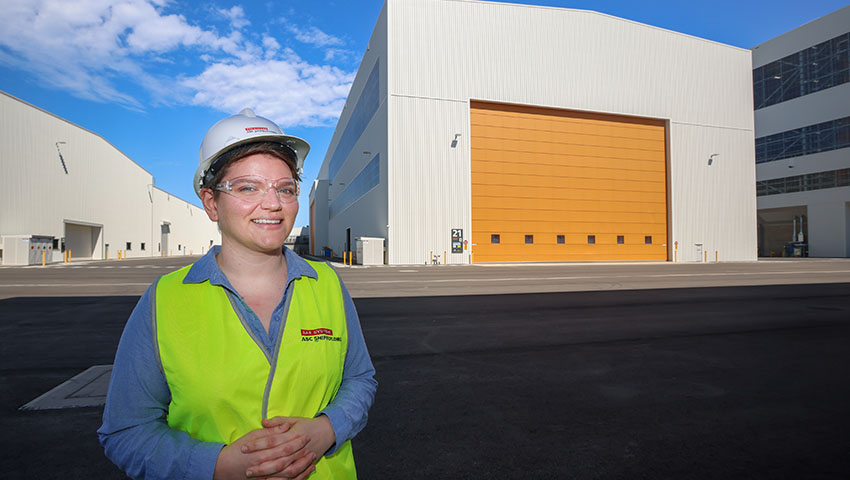BAE Systems Australia subsidiary ASC Shipbuilding has welcomed its 1,000th employee to the Hunter Class frigate program, as it progresses towards production of the Royal Australian Navy’s future frigate fleet.
Tayesha Papa has joined the business as a project controller. She attended Adelaide University, completing a Bachelor of Mechatronic Engineering and Computer Science, and in 2016 completed a three-month internship with BAE Systems at Edinburgh Parks.
Papa moved to Melbourne in 2017 and has returned to pursue her career on Australia’s biggest surface shipbuilding project.
ASC Shipbuilding managing director Craig Lockhart said, “I am delighted to welcome Tayesha to our business.
“Our commitment is to build a skilled and diverse workforce in Australia that will attract the brightest talent from schools and universities.”
Since the Hunter Class frigate program began, an average of 34 of people have been recruited per month, including almost 200 between March and July this year, at the height of the COVID-19 national lockdown.
Lockhart said, “On Hunter, we plan to employ 1,000 apprentices and graduates, so that by around 2038, some 75 per cent of the workforce including senior executives will have started as graduates or apprentices.”
Papa said, “I’m really looking forward to this next stage of my career. My previous roles have always been quite broad, so narrowing my focus and contributing to this monumental project is a challenge I’m ready to take on.”
The nine Hunter Class frigates will be based on the BAE Systems Type 26 Global Combat Ship currently under construction for the Royal Navy and will replace the eight Anzac Class frigates when they enter service beginning in the late 2020s.
The Hunter Class is billed as an anti-submarine warfare (ASW) centric vessel delivering an advanced ASW capability to the RAN at a time when 50 per cent of the world’s submarines will be operating in the Indo-Pacific region.
BAE Systems Australia announced that it had selected Lockheed Martin Australia and Saab Australia as combat systems integration industry partners, responsible for delivering the Australian designed CEAFAR 2 Active Phased Array Radar, Lockheed Martin designed Aegis combat management system and Saab Australia 9LV tactical interface.
The $35 billion program sees ASC Shipbuilding become a subsidiary of BAE Systems throughout the build process beginning in 2020 at the Osborne Shipyard in South Australia, creating more than 4,000 jobs.
BAE Systems expects the Australian industry content (AIC) for the Hunter Class build will be 65-70 per cent, which will create and secure thousands of jobs for decades.
At the end of the program the Commonwealth will resume complete ownership of ASC Shipbuilding, thereby ensuring the retention in Australia of intellectual property, a highly skilled workforce and the associated equipment.
SEA 5000 is expected to support over 500 Australian businesses who have been pre-qualified to be part of the Hunter Class supply chain, with the Australian steel industry in particular benefiting from the 48,000 tonnes of steel required to build the ships.






